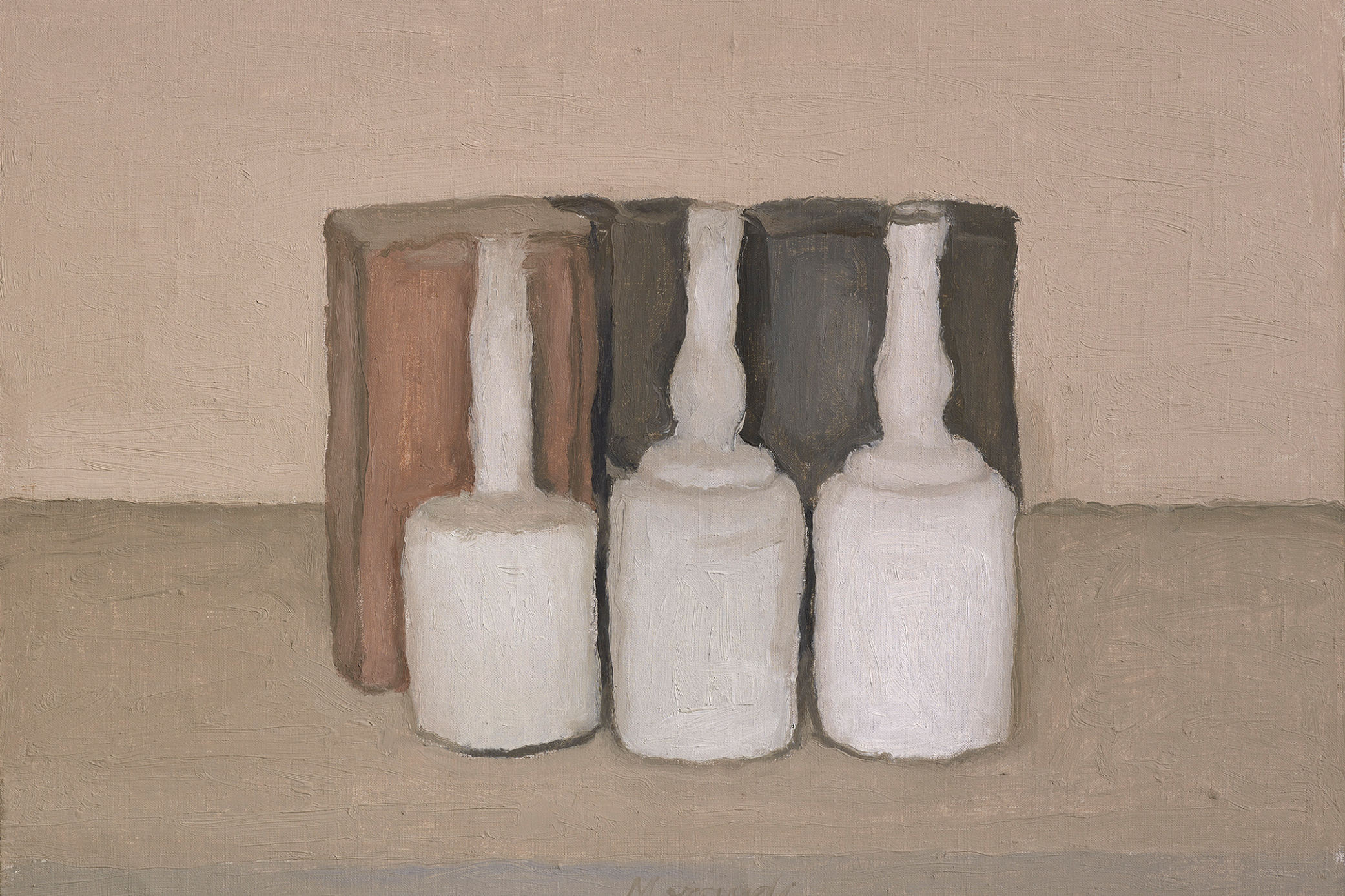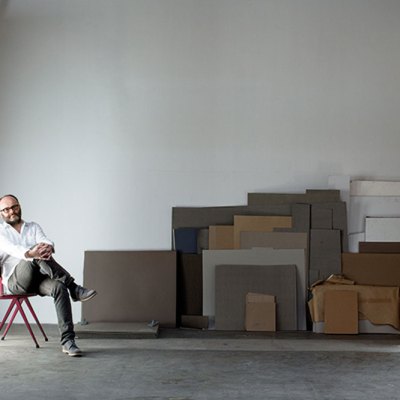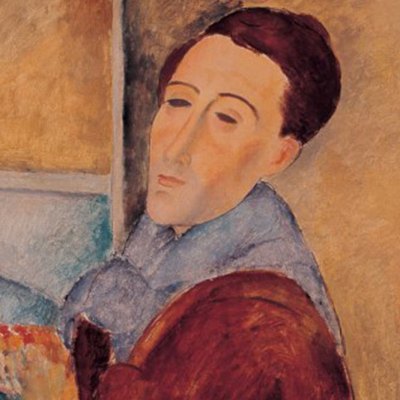The Estorick Collection in north London currently plays host to 50 first-class works by Giorgio Morandi (1890–1964), borrowed from the Fondazione Magnani-Rocca in Parma. Here, as you would expect, are the familiar still-life paintings of huddled tin and earthenware vessels: bottles, jugs and cups rendered in the rich palette of an Old Master. But also here are less familiar landscapes and a self-portrait, as well as compositions of other objects that caught the artist’s eye.
We begin with the artist. In his self-portrait Morandi comes across as confident and relaxed. He faces us directly – back straight and brush and palette held in his lap – but also awkwardly, with eyes a touch downcast and avoiding contact with the viewer. Throughout the show, the curators challenge Morandi’s reputation as a recluse, inferred by critics from the quietness of his life and perhaps encouraged by the quietude of his artworks. He lived at his family home in Bologna his entire life and worked from his bedroom, declining invitations to exhibit because of a reluctance to travel.
Self-Portrait (1925), Giorgio Morandi. Fondazione Magnani-Rocca, Parma. © DACS 2022

Yet despite this appearance of being a ‘hermit’, as Oskar Kokoschka called him, Morandi was sociable in his own way. Mostly through letter-writing, he took part in artistic debates and fostered friendships. An especially valued correspondent was Luigi Magnani (1906–84), the musicologist, writer and art critic whose collection has been imported by the Estorick for this exhibition. A display case containing letters from Morandi to Magnani comes at the end of the show: the later letters in particular document a close friendship rather than the subordinate relationship between artist and patron, with Morandi addressing his friend as ‘My dearest Magnani’ and never failing to include his and his sisters’ best wishes. Also on display is a postcard that Morandi sent to Magnani and his mother, from his regular summer holiday spot in Grizzana (now officially renamed Grizzana Morandi), a comune in the Apennines south of Bologna. While Magnani fostered relationships with other artists, it is clear that he prized his friendship with Morandi above all. In 1982, Magnani published his decades-long correspondence with the artist (Il mio Morandi; ‘my Morandi’). He wrote of their relationship: ‘A deep feeling of admiration and affection bound me to him from my youth. His benevolence, and my devotion, fostered a relationship of increasing familiarity and friendship that allowed me to penetrate the world of his painting, to get to know his tastes and his moods as well as the essential qualities of his great soul.’ The exhibition’s curators regard the range and quality of Magnani’s collection of 50 works by Morandi as a sign of their esteem for each other.
The two men first met in October 1940, while Morandi was taking the waters in the spa town of Salsomaggiore Terme, near Parma. By January the following year, Magnani acquired his first Morandis, a trio of still-life etchings. On show among these are two exquisite compositions of flowers, from 1928 and 1932. In 1941 there came a still life of a guitar, a horn and a mandolin, the only direct commission that Morandi ever accepted. Although he appeared to make an exception for Magnani – or perhaps he was too ashamed to decline? – Morandi protested by depicting not the instruments that his patron had lent him for the purpose, but battered flea-market toys balanced on the arched back of a mandolin belonging to the artist’s cousin. In the painting, the function of the instruments as instruments seems hardly to have mattered to Morandi; lines, volumes and colours were most important. This would have pleased Magnani, who wrote that ‘A painting full of content does not interest me at all, however beautiful its narrative may be. What matters to me is the formal aspect, otherwise I remain indifferent.’
The artist’s preferred bottles and other containers are more expressive and comprise the majority of the collection: in his later paintings, they appear to shiver and breathe, clustered together in the natural light of his bedroom-studio. This characteristic light, noted by Magnani during one of several visits to the Morandi home, is present in all the artist’s still lifes, ranging from watery and diffuse on overcast days to strong and raking in the summer. A landscape painting of the view from his room reveals a slab of reflective beige wall that fills the left side of the canvas, and which would have provided light at all times of day.
Courtyard on Via Fondazza (1954), Giorgio Morandi. Fondazione Magnani-Rocca, Parma. © DACS 2022

The hushed townhouse ambience of the Estorick helps to bring out these subtleties, as does the unobtrusive curation of the show. Morandi’s works combine a classical sense of proportion and composition with his own ideas of light and space, inspired by the Italian metaphysical and futurist schools. Upstairs in the permanent display, visitors can see the Estorick’s own collection of Morandis alongside works by pioneers in these avant-garde styles, such as Giorgio de Chirico, Carlo Carrà and Umberto Boccioni. For more than three decades, Morandi painted, engraved and sketched hundreds of similar compositions, always varying the positions of his props. With so many works all together and in this setting, the viewer sees that although the artist’s vessels are surely empty, stripped of purpose like the musical instruments, they are – contrary to Magnani’s taste – full of personhood and feeling; he poured his soul and spirit into each of them.
‘Giorgio Morandi: Masterpieces from the Magnani-Rocca Foundation’ is at the Estorick Collection, London, until 30 April.



